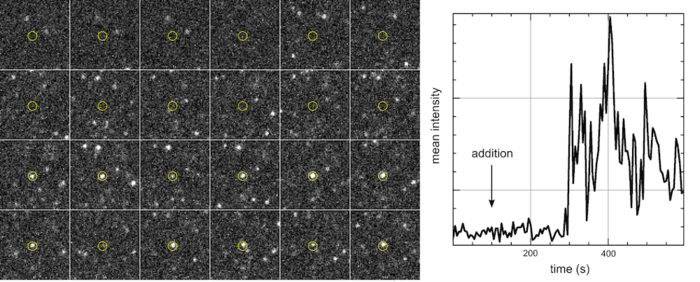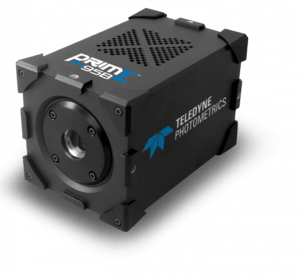Single Molecule Spectroscopy at Heidelberg University
Prof. Dirk-Peter Herten
Heidelberg University
Background
Professor Herten leads the Single Molecule Spectroscopy group at Heidelberg University aiming at quantitative analytical approaches in biology and chemistry based on single-molecule data acquired with advanced fluorescence microscopy.
The groups research interests range from the development of fluorescent probes for live-cell microscopy to the investigation of chemical reactions on a single-molecule level. The group successfully studies relatively simple reactions like complexation of Cu(II), Cu(I)/Cu(II) redox reactions and epoxidation of aliphatic double bonds.

The graph on the right shows the intensity changes in the ROI over time.
Challenge
In the area of single-molecule chemistry, the group have now turned to more complex catalytic reactions to try to identify individual reaction steps and alternative reaction pathways.
Here, the limited observation time due to photo-bleaching and low photon yield poses a major obstacle in the investigation of chemical transitions.
The precise identification of different molecular states occurring randomly during a chemical transformation requires excellent signal to noise ratio at high time-resolution in the millisecond range.
The Prime 95B, with the combination of large pixels and back-illumination, achieves not only a very high quantum yield but also a low readout noise at very high frame rates.
Dirk-Peter Herten
Solution
The Herten group are now using the Teledyne Photometrics Prime 95B sCMOS camera with their home built single molecule system.
Professor Herten told us that, "The Prime 95B, with the combination of large pixels with back-illumination, achieves not only a very high quantum yield but also a low readout noise at very high frame rates. The high frame rates and the low readout noise brings us closer to our goal of observing individual reaction steps in single-molecule experiments."
Professor Herten went on to say that, "The implementation of the Prime 95B into our existing self-build microscope setup was straight forward and super-easy. The programmable logical outputs enabled direct control of the camera during a running experiment and delivered excellent results already from the first experiment on."

Learn More About The Prime 95B
Download This Customer Story